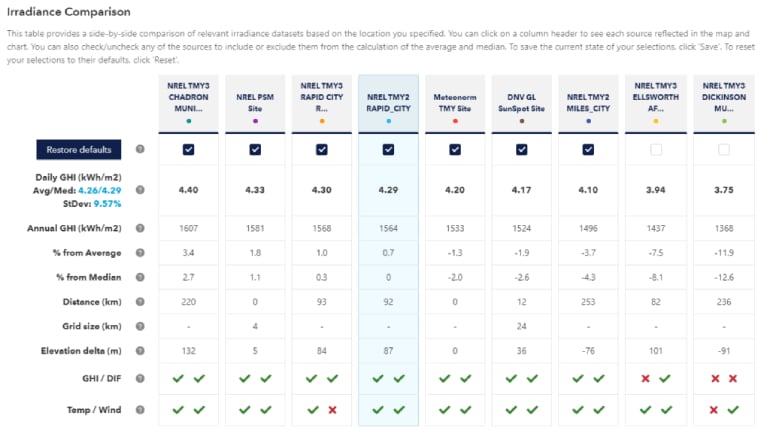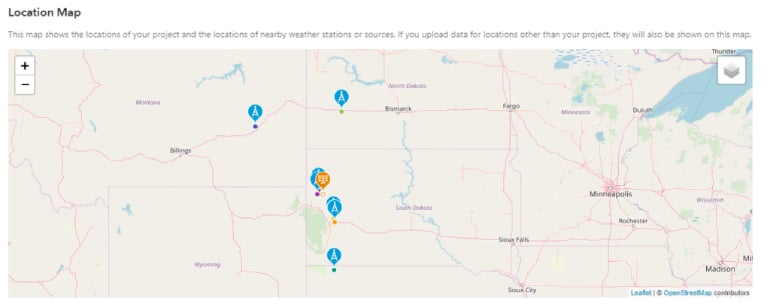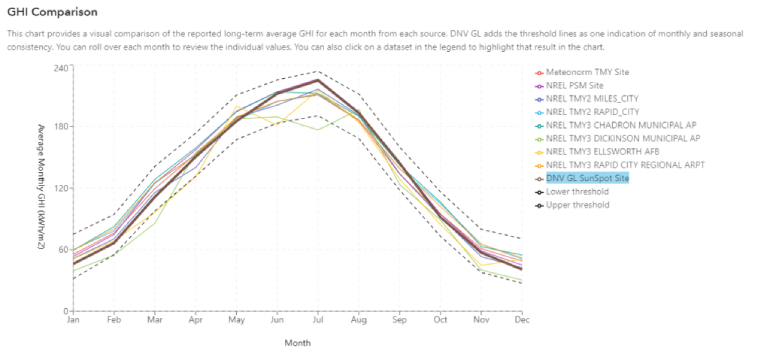Finance your solar project faster with Solar Resource Compass
Assess and compare solar irradiance with Solar Resource Compass
Are you looking to reduce uncertainty in site decisions for your solar energy project? DNV’s digital tool, Solar Resource Compass, can assist you in increasing the accuracy of your solar energy assessments by helping to select the best irradiance data for your project.
While solar irradiance data is available from many sources, there is considerable variation in the estimates available from both free and paid irradiance data providers. At many project locations, the spread between the highest and lowest estimates can exceed 10%. Relying on a single source for irradiance data may estimate high at some locations and estimate low at other locations – which can undervalue a project, leaving money on the table, and hurt the project at project financing. Solar Resource Compass allows easy comparison of irradiance data for any U.S. project location, early in the project lifecycle.
Our new tool accesses and compares irradiance data from multiple data providers to allow you to see how they compare for your project location. By default, Solar Resource Compass will access data from NREL (including the PSM satellite model and the nearest TM2/TM3 locations), Meteonorm and DNV’s SunSpot irradiance model. This is all presented in convenient table, chart and map that shows your project location and the available data sources.

Figure 1: Irradiance comparison table
Figure 1 shows how irradiance data from multiple providers is presented for comparison. In the example shown, irradiance varies by more than 10%. DNV’s analytics compares the data sources for seasonal consistency and excludes sources that don’t show a good alignment. Data can be downloaded from any provider in a format that is easily imported into PVSyst or SolarFarmer. Figure 2 presents the locations corresponding to each dataset in relation to the project location.

Figure 2: Irradiance comparison table
One of the key comparisons performed by Solar Resource Compass is a monthly comparison to assess whether any of the candidate data sources show anomalous or inconsistent data relative to other providers – this can highlight problematic datasets to reduce the risk that you select a weather source that has significant data quality issues.

Figure 3: Monthly comparison chart
Solar Resource Compass includes a free tier that provides a limited comparison, and a paid tier with several flexible subscriptions options to access the full analysis.
Further updates and new features will continue to be added throughout 2020. To be notified of new releases and influence new feature development you would like to see in the tool, log in to Solar Resource Compass.
Contact our Product Director, Jackson Moore at Jackson.moore@dnv.com or schedule a demo to better understand how irradiance data varies at your projects and receive promotional credits.
11/19/2019 9:00:00 AM


